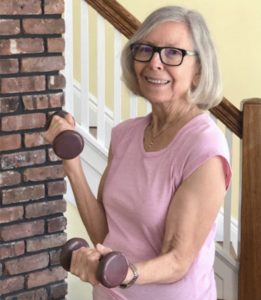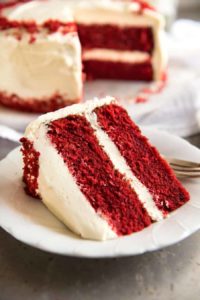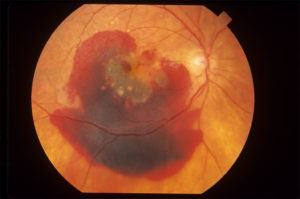Beauty and the Blind: Accessible Beauty Products for VI Women?
Starbucks offers new service to make menu accessible to those with blindness and low vision
Starbucks is now offering more options to make their stores and ordering experience accessible to customers who are living with low vision or blindness! Learn more by clicking here.
VLANJ Expands Free Virtual Programs During Pandemic Thanks to Grants
Valentine’s Day “Very Red Velvet Cake”
Looking for the perfect Valentine’s Day recipe? Look no further!
VLANJ student and technology instructor Christina Brino recommends a recipe featured on Epicurious.com by Dora Charles: “Very Red Velvet Cake With Cream Cheese Icing and Pecans.” Here’s what you need to make it:
- YIELD
- Serves 12–16
INGREDIENTS
- Cake:
- 2½ cups cake flour
- ½ teaspoon baking soda
- 2 large eggs, at room temperature
- 1½ cups sugar
- 1½ cups vegetable oil
- 2 tablespoons distilled white vinegar
- 1 cup buttermilk
- 1 teaspoon pure vanilla extract
- 3 tablespoons red food coloring (from two 1-ounce bottles)
- Icing:
- 1 (1-pound) box confectioners’ sugar, sifted
- 1 (8-ounce) package cream cheese, softened
- 1 stick (8 tablespoons) butter, softened
- 1 cup chopped pecans
Here’s how to make it:
PREPARATION
To make the cake: Set the oven to 350°F and adjust the rack positions to the middle and top third. Spray three 8-inch round cake pans well with baking spray.
-
- Sift the flour with the baking soda.
- In a large bowl, with an electric mixer on medium speed, beat the eggs well, then beat in the sugar, oil, and vinegar. On low speed, slowly add the flour and beat in well. Add the buttermilk slowly, then the vanilla, and then the food coloring.
- Pour the batter evenly into the pans and rap them on the countertop several times to eliminate any air bubbles. Bake for 12 minutes, then rotate the pans from shelf to shelf so they bake evenly and bake until the tops spring back when lightly touched, about 25 minutes altogether. Let the cakes cool in the pans on racks for 15 minutes.
- Run a knife around the sides of the pans and invert the cakes onto the racks to cool completely. Once they’re cool, refrigerate the cakes for 20 to 30 minutes to make icing them easier.
- To make the icing: Combine everything in a medium bowl and mix well until very smooth. It’s best to use the icing right away, when it’s soft and spreadable.
- Put one cake layer upside down on a cake plate or cake stand and cover the top evenly with frosting. Add a second layer, right side up, and spread with more frosting. Top with the third layer, right side up, and spread the frosting evenly around the sides of the cake and on top; check for any places where you can see through to the cake. Finally, sprinkle the pecans evenly all over the top of the cake.
- Once the frosting sets, cut into slices to serve. This cake keeps for up to 2 weeks in a cake keeper, but once it’s ready, people want to dive right in.
Retina Specialist on Macular Degeneration and Other Conditions
February is Age-Related Macular Degeneration Awareness Month. Often called AMD or ARMD, it is the leading cause of vision loss and blindness among Americans who are aged 65 and older.






